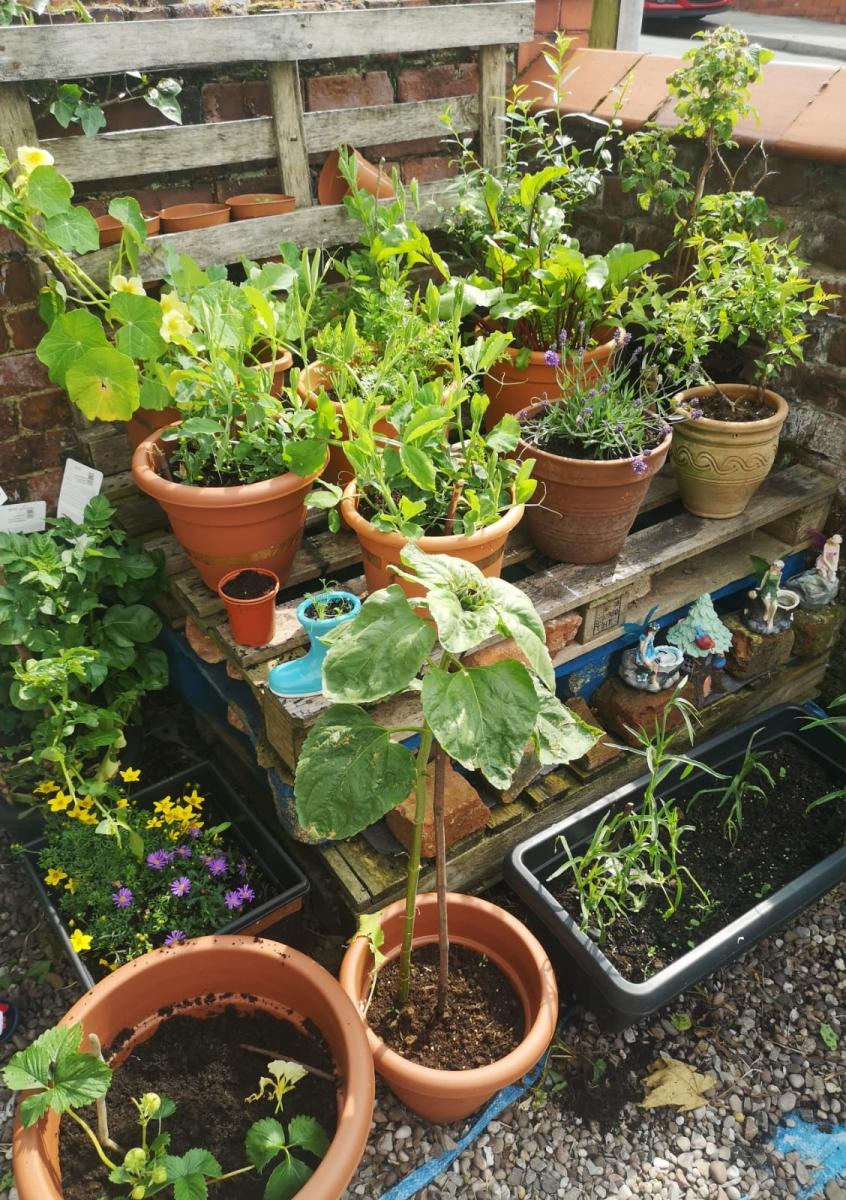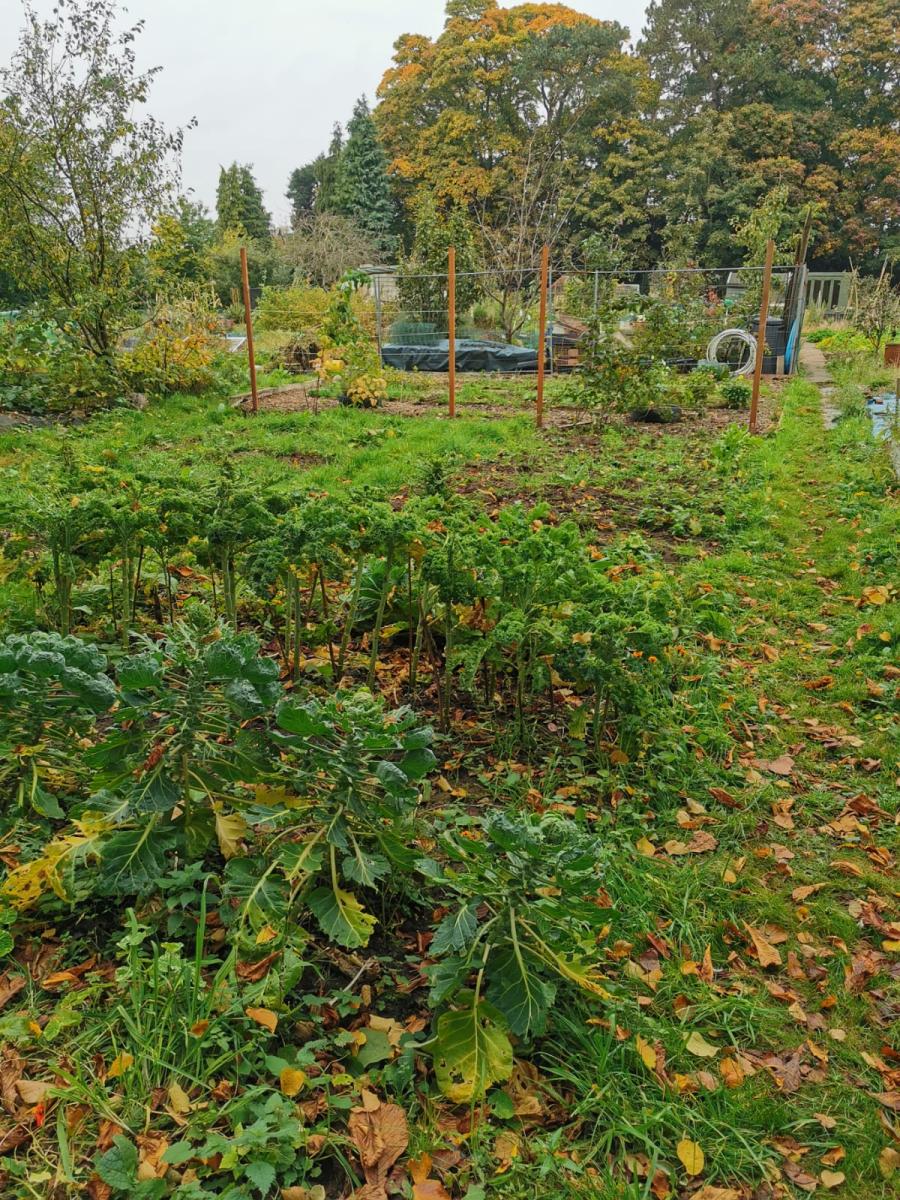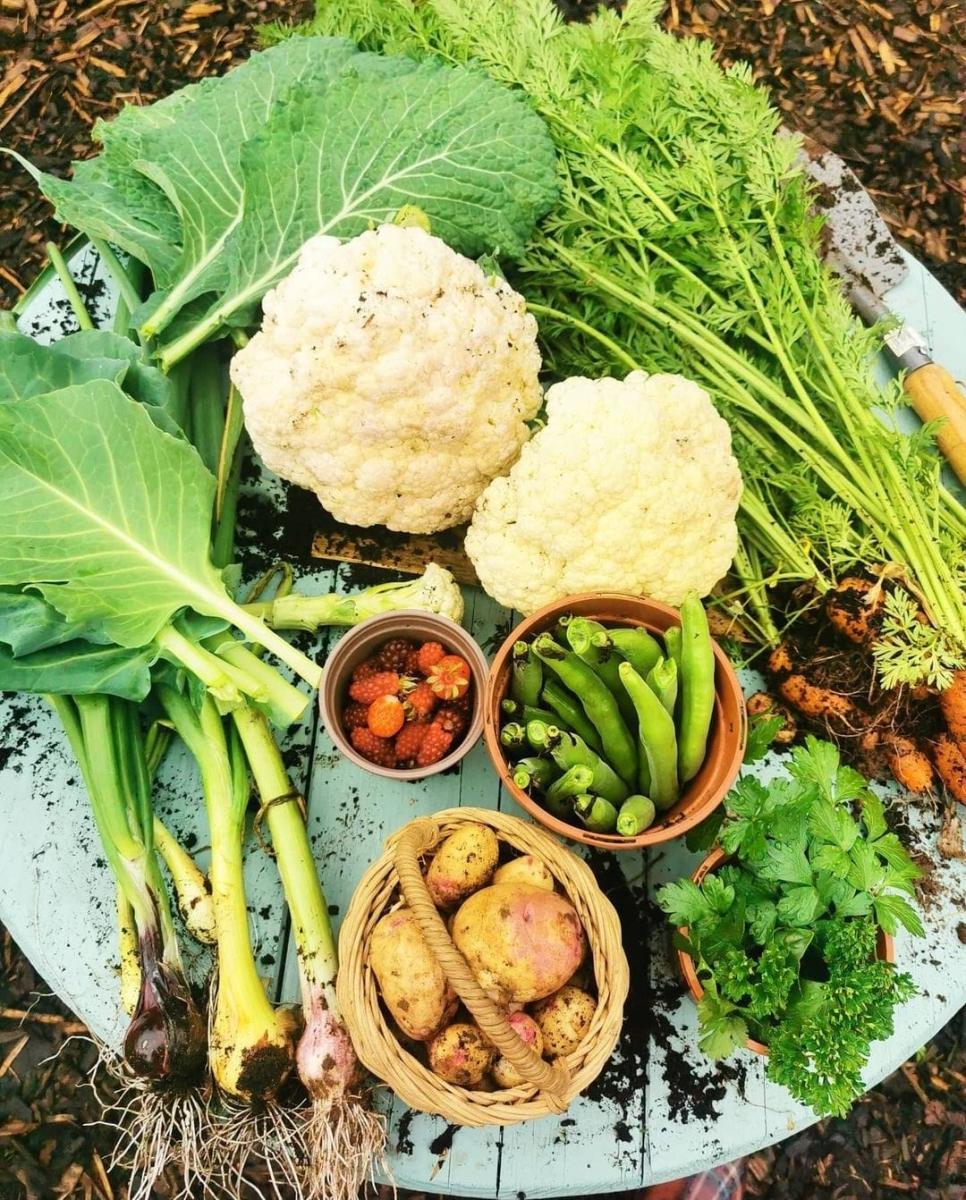Growing together from plot to plate
Visualise growing your own plants, more specifically your own fruit and vegetables, instead of shopping at a supermarket. I believe that a lot of us can grow some food ourselves, even if we only have a modest windowsill or doorstep. And my family are testament to that.
We live in a flat and have no access to a garden. We do, however, have a shared driveway and, by commandeering a tiny three-foot by three-foot corner of it, we created our own personal slice of nature. In 2014, my wife and I agreed that we would love an allotment. We contacted our local council to enquire about availability, not realising the vast size of the waiting list! We put our name down anyway: in it to win it and all that. And six years later the waiting paid off. We are now the fortunate lodgers on a very generously sized allotment, certainly bigger than nine square foot!
But before I get carried away gushing over our allotment, let me take you back to that initial tiny space we had at home. While we waited for an allotment to become available, we converted that very tiny corner of our driveway into a bug hotel and vegetable garden using some disused pallets and second-hand plant pots from family and neighbours. One of our wonderful neighbours even surprised us one day by placing some beautiful stone fairies among the plant pots, to the delight of our daughter!
We nurtured a very small assortment of food in the pots, including potatoes, tomatoes, herbs and strawberries. We also grew some flowers from seed to entice pollinators, initially using our kitchen worktops to propagate them, hung a couple of bird-feeders, placed water out for the hedgehogs and filled the sides of the pallets with a multitude of natural bric-à-brac to keep the bugs cosy! We took great pride in this little colourful corner of nature, which truly sparked our desire to discover more about growing our own food, ready for when we became allotment-holders.
The internet is a good place to learn about growing your own food and I discovered so much in those six years of waiting. I also scoured charity shops for any second-hand gardening books and used a familiar app to pin any interesting designs and ideas for what we wanted our plot to ultimately look like. We knew we wanted it to become a special place for our daughter – a garden play area as well as a growing space. The terms of our agreement specified that the allotment had to be 75% cultivated, so we used the remaining 25% to craft a play space for our daughter. That meant she could stay occupied when not helping us get stuck in!
We try to reuse and repurpose items as much as possible. We used surplus tree stumps and old tyres as well as planks of wood and old scaffolding boards to create a balancing area for her. We also made a water wall, mud kitchen and sandpit using recycled materials. My favourite hobby these days has become skip-dipping (with the skip owners’ consent!). Who knew an old log store could be turned upside down and converted into a masterpiece of imagination – a pirate ship that sails the high seas every weekend searching for tigers in need of rescuing (treasure evidently isn’t appealing enough for our daughter!).
One huge bonus of having our plot is the inspiration it creates within our household. We are a home-educating family, so we are lucky enough to be able to learn continuously about the natural world, including how it inspires us vegans to live. Being vegan influences our every action at the allotment. Our methods of growing differ to many non-vegans on our site – for example, we are a wholly organic plot and we do not allow any chemicals onto it. We have huge issues with red ants, but we will not use an insect-killer, boiling water or any other methods to get rid of them.
We also seem to be the plot of choice for every slug in the surrounding area! Slug pellets, beer traps and sheep’s wool seem to be the go-to solution for most people to get rid of the blighters. But these aren't options that align with our values. Instead, our tactic uses plain old manual labour: see a slug – move it to the back of the plot, as far away from the crops as we can. We accept that our yield will be lower than those who are willing to use items that deter and harm wildlife, but at least our conscience is clear. After all, the wildlife was there before we turned up!
Now, even though that yield might be lower for us than some because of the hungry critters, we still have plenty to feed ourselves, as well as passing what we can onto our family and friends. There is nothing better than sharing the fruits and vegetables of our labour! That probably gives me the most satisfaction: knowing that someone else is getting to enjoy our achievements and they are getting to taste what a carrot should taste like! From plot to plate, no animal was harmed in what I feel is a most enjoyable process of growing our own!
Grow Green
We’re celebrating National Allotments Week as part of our Grow Green campaign. Transformation of our food system must take place at every level, from your back garden to the farmers that grow our beans and cabbages, to the national and international policies which influence how food is produced. Through the Grow Green campaign, The Vegan Society advocates for a planet friendly, vegan farming system, it pushes for better farming policies to help those growing plant proteins and vegetables in the UK and the EU and shares knowledge on the transition to animal free farming. Find out more on our Grow Green campaign pages.
The views expressed by our bloggers are not necessarily the views of The Vegan Society.

